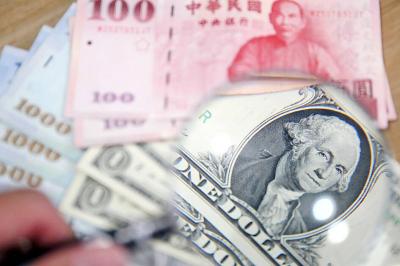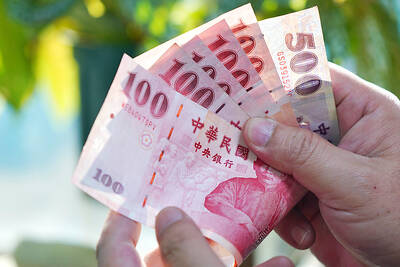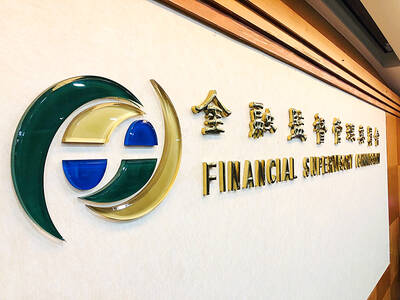As far back as he can remember, people told Hari Kishan Pippal that he was unclean, with a filthiness that had tainted his family for centuries. Teachers forced him to sit apart from other students. Employers sometimes didn’t bother to pay him.
Pippal is a Dalit, a member of the outcast community once known as “untouchables.” Born at the bottom of Hinduism’s complex social ladder, that meant he could not eat with people from higher castes or drink from their wells. He was not supposed to aspire to a life beyond that of his father, an illiterate cobbler. Years later, he still won’t repeat the slurs that people called him.
Now, though, people call him something else.
They call him rich.
Pippal owns a hospital, a shoe factory, a car dealership and a publishing company. He owns six cars. He lives in a maze of linked apartments in a quiet if dusty neighborhood of high walls and wrought-iron gates.
“In my heart, I am Dalit. But with good clothes, good food, good business, it is like I am high-caste,” he said, a 60-year-old with a shock of white hair, a well-tailored vest and the girth of a Victorian gentleman.
Now, he points out, he is richer than most Brahmins, who sit at the top of the caste hierarchy.
However, in an increasingly globalized nation wrestling with centuries of deeply held caste beliefs, there is little agreement about what that means. Does Pippal, and the handful of other Dalit millionaires, reflect a country shrugging off centuries of caste bias? Does caste still hold sway the way it used to?
Even Pippal isn’t sure.
“Life is good for me,” he said, sitting in his office in Heritage Hospital, one of the largest private medical facilities in this north Indian city. “But life is very bad for many, many people.”
The vast majority of India’s 170 million Dalits live amid a thicket of grim statistics: less than a third are literate, more than 40 percent survive on less than US$2 a day and infant mortality rates are dramatically higher than among higher castes. Dalits are far more likely than the overall population to be underweight and far less likely to get postnatal care.
While caste discrimination has been outlawed for more than 60 years and the term “untouchable” is now taboo in public, thousands of anti-Dalit attacks occur every year. Hundreds of people are killed.
The stories spill from India’s newspapers: the 14-year-old Dalit strangled because he shared his first name with a higher-caste boy; the 70-year-old man and his disabled daughter burned alive after a Dalit-owned dog barked at higher-caste neighbors; the man run over at a gas station because he refused to give up his place in line to a high-caste customer.
However, amid centuries of caste tradition that can seem immutable, there has been slow change.
In an extensive survey by the Center for the Advanced Study of India at the University of Pennsylvania, researchers found that Dalits living in concrete homes, not huts made from mud and straw, had jumped from 18 percent to 64 percent between 1990 and 2007 in one north Indian district. Ownership of various household goods — fans, chairs, pressure cookers and bicycles — had skyrocketed over the same period.
While most Dalits still support themselves as rural laborers, there is also a growing Dalit middle class, many of them civil servants who have benefited from affirmative action laws.
“Caste is losing its grip,” said Chandra Bhan Prasad, a Dalit writer, social scientist and one-time Marxist militant who has become a leading voice urging the Dalit poor to see the virtues of capitalism.
In a consumer society, Prasad says, wealth can trump caste — at least some of the time. Growing economies also foster urbanization, he says, allowing low-caste Indians to escape traditional village strictures. Finally, economic growth also means that the traditional merchant castes are not large enough to fill every job.
“This means other castes also have a chance” in the business world, Prasad said.
To Prasad, the new millionaires are a way to prove that Dalits can make it in a globalized world.
No one knows how many wealthy Dalit entrepreneurs have emerged since India opened its economy in the early 1990s, sparking some of the world’s fastest economic growth. Hundreds certainly, maybe thousands.
They are also increasingly visible. A decade ago, Dalit businessmen regularly changed their last names, since these almost always identify someone’s caste. Even Pippal did it at first, playing off the pronunciation of his name and calling his first company “People’s Exports” to mask his caste background.
Now, the Dalit rich are chatting over cocktails at meetings of their own chamber of commerce and are setting up booths at Dalit trade fairs. Top government officials are talking about a venture capital fund to make financing more easily available to entrepreneurs from India’s outcast communities.
The wealthiest, meanwhile, have become darlings of the Indian media, held up as proof that modern India is an increasingly caste-blind society.
Nonsense, says Anand Teltumbde, a prominent Dalit activist.
“These stories [about successful Dalits] sit well with the middle class,” said Teltumbde, who is a grandson of B.R. Ambedkar, an independence-era Dalit lawyer revered as a hero by Dalits across India. “The entire world has changed ... but the number of well-off Dalits is no more than 10 percent. Ninety percent of Dalits live a dilapidated kind of life.”
As for Pippal, he finds himself uncomfortably in the middle of this debate. He is a rich Dalit who thinks very little has changed for India’s outcasts, a man who credits his own success to hard work and one enormous advantage: ego.
“From my childhood, I was thinking one day I will be a big man,” he said.
Raised in poverty, he only made it through high school before his father became ill and he had to go to work pulling a rickshaw to support the family. His first break came when he married a Dalit woman from a slightly better-off family that owned a small shoe workshop.
Dalits have long dominated the shoe business. Caste is largely a reflection of traditional trades and since making shoes involved working with the skins of dead animals, it was left to Dalits.
However, Pippal shifted the focus of his father-in-law’s workshop, concentrating on high-quality shoes and teaching himself a slew of languages — English, Tamil, Punjabi, Russian, German — to sell his footwear more widely. Today, he owns a factory that employs 300 people and where 500 handmade shoes are turned out every day, then packed into boxes already marked with prices in euros and British pounds. The expensive ones retail for as much as US$500 a pair.
He used his footwear profits to start the small Honda dealership and then the hospital. Immense profits are being made in India’s private healthcare industry as the new middle class seeks alternatives to the often-questionable care at most public hospitals.
He gleefully talks about the Brahmin doctors who at first worked for him very reluctantly.
“Now they are earning lot of money from this hospital,” he said.
Of course, so is Pippal. He’s still a long way from being a billionaire, but says his businesses have a total turnover of about US$12 million a year.
At first glance, Heritage Hospital doesn’t look state-of-the-art. Pippal’s office has stained green carpeting and paint coming away in bubbly clumps. On a recent day, masons were working near the main entrance, forcing patients to enter through a dark hallway beneath his Honda dealership, which is next door. Janitors do little but move around the dirt with wet rags.
However, it is cleaner and has more resources than the public hospitals most Indians must rely upon. Pippal proudly ticks off its assets: 150 beds, 187 doctors, a range of care from oncology to plastic surgery.
In so many ways, Pippal has proven himself a success. He is rich. He is greeted with respect on the streets. His children went to good schools and grew up with friends from across the caste spectrum.
Yet, he also believes that he remains, very often, a figure of quiet contempt.
“These people are very bloody clever,” Pippal said of the high-caste businessmen with whom he deals. “When there are profits to be made, then everything [about his caste] is OK. But in their mind, they’re thinking: ‘He is a Dalit.’”

The US dollar was trading at NT$29.7 at 10am today on the Taipei Foreign Exchange, as the New Taiwan dollar gained NT$1.364 from the previous close last week. The NT dollar continued to rise today, after surging 3.07 percent on Friday. After opening at NT$30.91, the NT dollar gained more than NT$1 in just 15 minutes, briefly passing the NT$30 mark. Before the US Department of the Treasury's semi-annual currency report came out, expectations that the NT dollar would keep rising were already building. The NT dollar on Friday closed at NT$31.064, up by NT$0.953 — a 3.07 percent single-day gain. Today,

‘SHORT TERM’: The local currency would likely remain strong in the near term, driven by anticipated US trade pressure, capital inflows and expectations of a US Fed rate cut The US dollar is expected to fall below NT$30 in the near term, as traders anticipate increased pressure from Washington for Taiwan to allow the New Taiwan dollar to appreciate, Cathay United Bank (國泰世華銀行) chief economist Lin Chi-chao (林啟超) said. Following a sharp drop in the greenback against the NT dollar on Friday, Lin told the Central News Agency that the local currency is likely to remain strong in the short term, driven in part by market psychology surrounding anticipated US policy pressure. On Friday, the US dollar fell NT$0.953, or 3.07 percent, closing at NT$31.064 — its lowest level since Jan.

The New Taiwan dollar and Taiwanese stocks surged on signs that trade tensions between the world’s top two economies might start easing and as US tech earnings boosted the outlook of the nation’s semiconductor exports. The NT dollar strengthened as much as 3.8 percent versus the US dollar to 30.815, the biggest intraday gain since January 2011, closing at NT$31.064. The benchmark TAIEX jumped 2.73 percent to outperform the region’s equity gauges. Outlook for global trade improved after China said it is assessing possible trade talks with the US, providing a boost for the nation’s currency and shares. As the NT dollar

The Financial Supervisory Commission (FSC) yesterday met with some of the nation’s largest insurance companies as a skyrocketing New Taiwan dollar piles pressure on their hundreds of billions of dollars in US bond investments. The commission has asked some life insurance firms, among the biggest Asian holders of US debt, to discuss how the rapidly strengthening NT dollar has impacted their operations, people familiar with the matter said. The meeting took place as the NT dollar jumped as much as 5 percent yesterday, its biggest intraday gain in more than three decades. The local currency surged as exporters rushed to